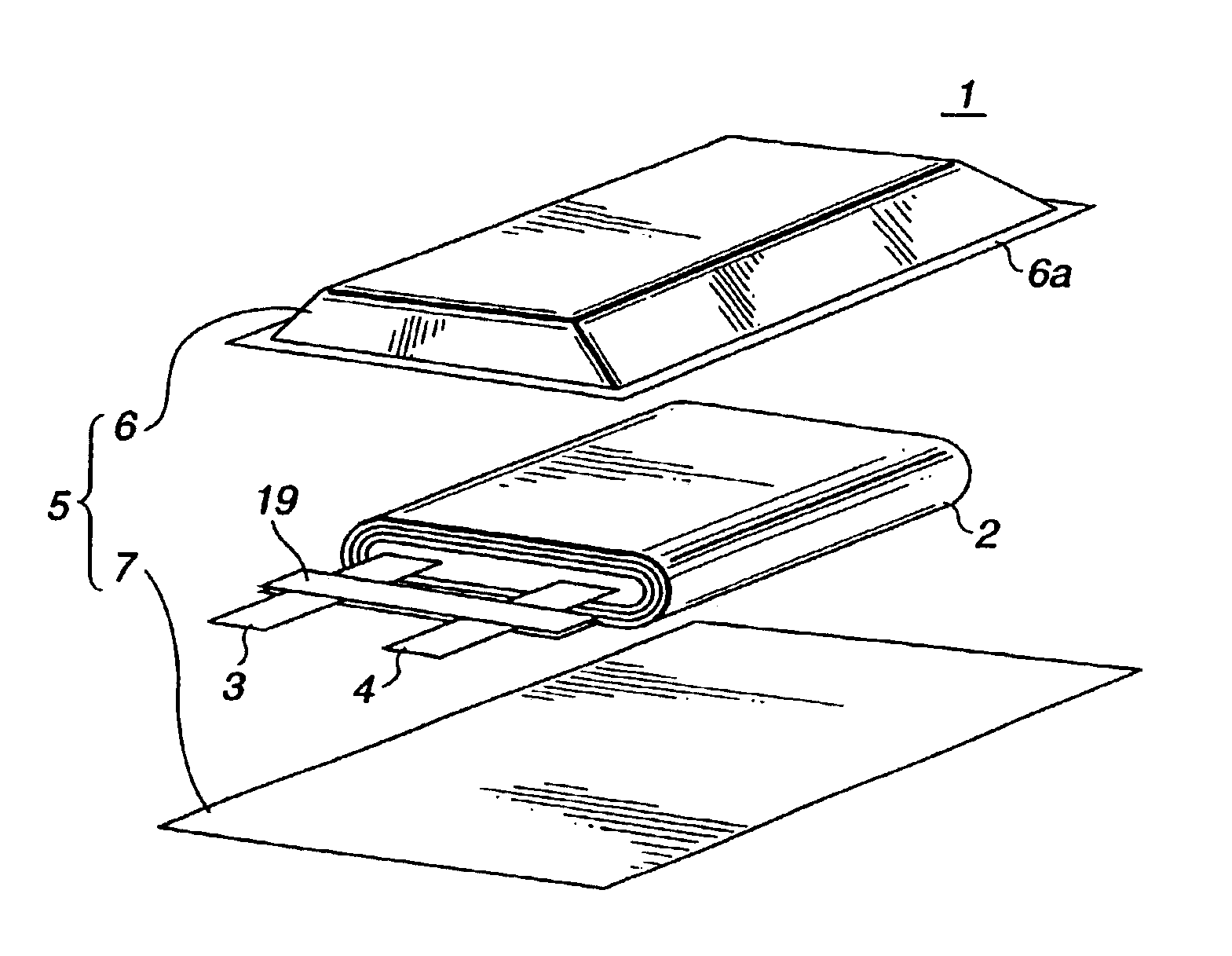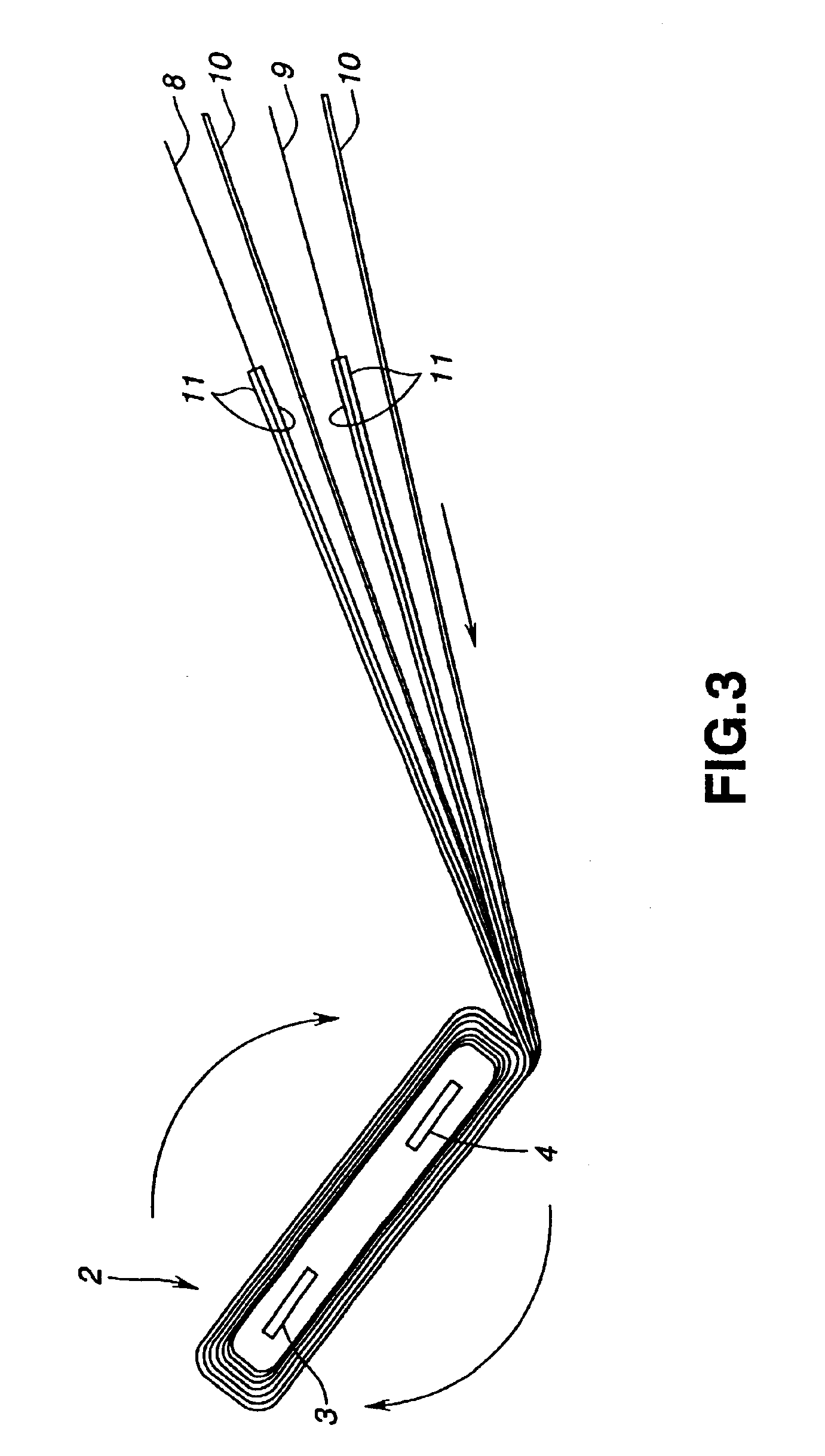Solid electrolyte battery
a solid electrolyte and battery technology, applied in the maintenance/servicing of primary cells, wound/folded electrode electrodes, non-aqueous electrolyte cells, etc., can solve the problems of poor discharge load characteristics and performance degradation, and achieve the effect of raising the energy density of the battery
- Summary
- Abstract
- Description
- Claims
- Application Information
AI Technical Summary
Benefits of technology
Problems solved by technology
Method used
Image
Examples
example 1
[0067]In Example 1, the positive electrode was manufactured by initially mixing marketed lithium carbonate and cobalt carbonate such that the composition ratio of lithium atoms and cobalt atoms was 1:1. Then, the mixture was calcinated in air at 900° C. for 5 hours, resulting in obtaining lithium cobalt oxide (LiCoO2) which was employed as the active material of the positive electrode. The lithium cobalt oxide in a quantity of 91 wt %, carbon black serving as a conducting material in a quantity of 6 wt % and polyvinylidene fluoride serving as a binder in a quantity of 3 wt % were mixed so that a mix for constituting the positive electrode was obtained. The mix for the positive electrode is dispersed in N-methylpyrolidone so that slurry (in the form of paste) was obtained. Then, the obtained mix slurry for the positive electrode was uniformly applied to the two sides of aluminum foil which was formed into the collector of the positive electrode and which had a thickness of 20 μm. The...
examples 2 to 4
[0075]Polymer lithium-ion secondary batteries according to Examples 2 to 4 were manufactured similarly to Example 1 except for the total film thickness A of the positive-electrode active material layer which was identically 60 μm and the total film thicknesses B of the negative-electrode active material layer which were as shown in Table 1. In Examples 2 to 4, the thickness ratios A / B of the total film thickness A of the positive-electrode active material layer with respect to the total film thickness B of the negative-electrode active material layer were made to be 1.00, 0.80 and 0.60 by changing the total film thickness B of the negative-electrode active material layer.
examples 5 to 8
[0076]Polymer lithium-ion secondary batteries according to Examples 5 to 8 were manufactured similarly to Example 1 except for the total film thickness A of the positive-electrode active material layer which was identically 90 μm and the total film thicknesses B of the negative-electrode active material layer which were as shown in Table 1. In Examples 5 to 8, the thickness ratios A / B of the total film thickness A of the positive-electrode active material layer with respect to the total film thickness B of the negative-electrode active material layer were made to be 1.00, 0.80 and 0.60 by changing the total film thickness B of the negative-electrode active material layer.
PUM
| Property | Measurement | Unit |
|---|---|---|
| molar concentration | aaaaa | aaaaa |
| ion conductivity | aaaaa | aaaaa |
| density | aaaaa | aaaaa |
Abstract
Description
Claims
Application Information
 Login to View More
Login to View More - R&D
- Intellectual Property
- Life Sciences
- Materials
- Tech Scout
- Unparalleled Data Quality
- Higher Quality Content
- 60% Fewer Hallucinations
Browse by: Latest US Patents, China's latest patents, Technical Efficacy Thesaurus, Application Domain, Technology Topic, Popular Technical Reports.
© 2025 PatSnap. All rights reserved.Legal|Privacy policy|Modern Slavery Act Transparency Statement|Sitemap|About US| Contact US: help@patsnap.com



